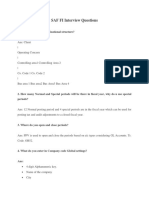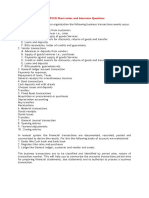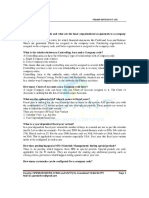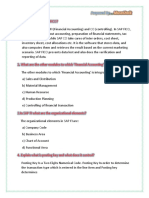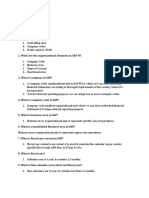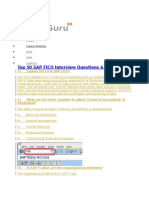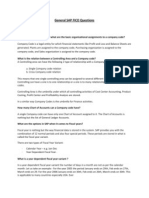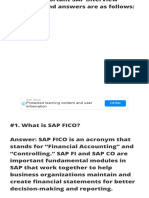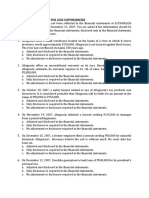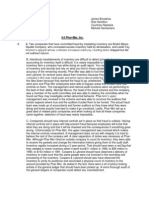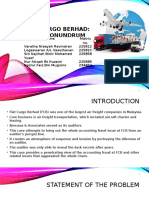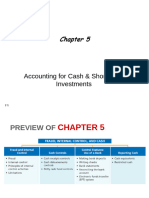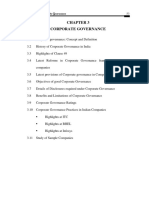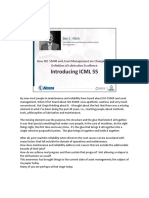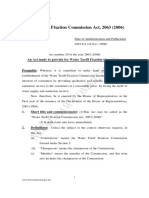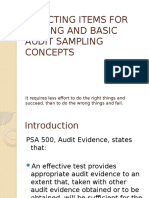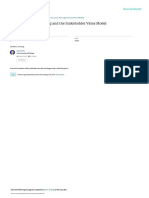0% found this document useful (0 votes)
98 views7 pagesSAP Enterprise Structure
The document contains a series of interview questions and answers related to SAP Enterprise Structure, covering topics such as Chart of Accounts, Fiscal Year Variants, posting periods, and account management. Key concepts include the distinction between year dependent and year independent fiscal year variants, the configuration of currencies for company codes, and the control mechanisms for posting periods and document types. It also addresses reconciliation accounts, field status groups, and tolerance groups for GL accounts and employees.
Uploaded by
adi2ursCopyright
© © All Rights Reserved
We take content rights seriously. If you suspect this is your content, claim it here.
Available Formats
Download as DOCX, PDF, TXT or read online on Scribd
0% found this document useful (0 votes)
98 views7 pagesSAP Enterprise Structure
The document contains a series of interview questions and answers related to SAP Enterprise Structure, covering topics such as Chart of Accounts, Fiscal Year Variants, posting periods, and account management. Key concepts include the distinction between year dependent and year independent fiscal year variants, the configuration of currencies for company codes, and the control mechanisms for posting periods and document types. It also addresses reconciliation accounts, field status groups, and tolerance groups for GL accounts and employees.
Uploaded by
adi2ursCopyright
© © All Rights Reserved
We take content rights seriously. If you suspect this is your content, claim it here.
Available Formats
Download as DOCX, PDF, TXT or read online on Scribd
/ 7



